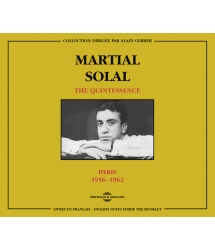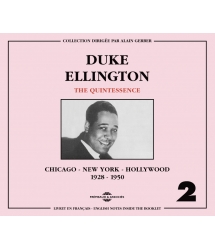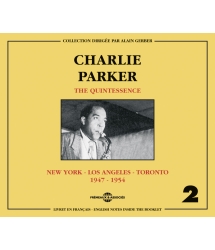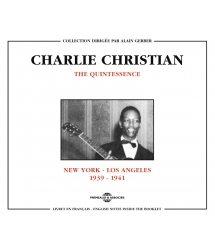- Our Catalog
- Philosophy
- Philosophers of the 20th century and today
- History of Philosophy (PUF)
- Counter-History and Brief Encyclopedia by Michel Onfray
- The philosophical work explained by Luc Ferry
- Ancient thought
- Thinkers of yesterday as seen by the philosophers of today
- Historical philosophical texts interpreted by great actors
- History
- Books (in French)
- Social science
- Historical words
- Audiobooks & Literature
- Our Catalog
- Jazz
- Blues
- Rock - Country - Cajun
- French song
- World music
- Africa
- France
- Québec / Canada
- Hawaï
- West Indies
- Caribbean
- Cuba & Afro-cubain
- Mexico
- South America
- Tango
- Brazil
- Tzigane / Gypsy
- Fado / Portugal
- Flamenco / Spain
- Yiddish / Israel
- China
- Tibet / Nepal
- Asia
- Indian Ocean / Madagascar
- Japan
- Indonesia
- Oceania
- India
- Bangladesh
- USSR / Communist songs
- World music / Miscellaneous
- Classical music
- Composers - Movie Soundtracks
- Sounds of nature
- Our Catalog
- Youth
- Philosophy
- News
- How to order ?
- Receive the catalog
- Manifesto
- Dictionnary











- Our Catalog
- Philosophy
- Philosophers of the 20th century and today
- History of Philosophy (PUF)
- Counter-History and Brief Encyclopedia by Michel Onfray
- The philosophical work explained by Luc Ferry
- Ancient thought
- Thinkers of yesterday as seen by the philosophers of today
- Historical philosophical texts interpreted by great actors
- History
- Books (in French)
- Social science
- Historical words
- Audiobooks & Literature
- Our Catalog
- Jazz
- Blues
- Rock - Country - Cajun
- French song
- World music
- Africa
- France
- Québec / Canada
- Hawaï
- West Indies
- Caribbean
- Cuba & Afro-cubain
- Mexico
- South America
- Tango
- Brazil
- Tzigane / Gypsy
- Fado / Portugal
- Flamenco / Spain
- Yiddish / Israel
- China
- Tibet / Nepal
- Asia
- Indian Ocean / Madagascar
- Japan
- Indonesia
- Oceania
- India
- Bangladesh
- USSR / Communist songs
- World music / Miscellaneous
- Classical music
- Composers - Movie Soundtracks
- Sounds of nature
- Our Catalog
- Youth
- Philosophy
- News
- How to order ?
- Receive the catalog
- Manifesto
- Dictionnary
1958-1960
Ref.: FA5632
Label : Frémeaux & Associés
Total duration of the pack : 3 hours 44 minutes
Nbre. CD : 3
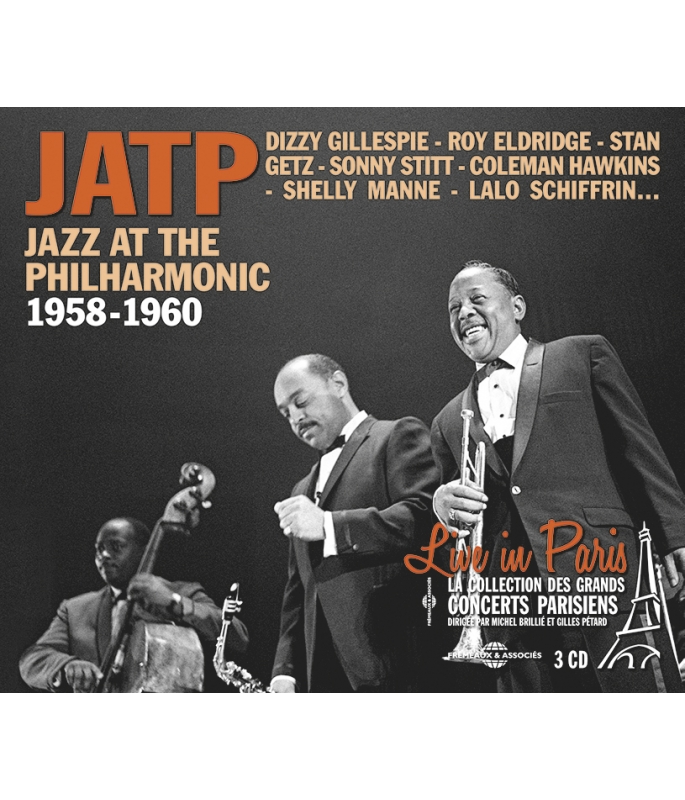
1958-1960
A legendary aura surrounds the four initials JATP: collectively they refer to Jazz At The Philharmonic, an unforgettable series of concerts and recordings produced from the ‘40s to the ‘70s by Norman Granz, the most famous impresario in jazz history.
His aim was to bring jazz out of the clubs and into major venues with jam sessions involving the day’s leading artists.
This 3-disc set, complete with an introductory booklet by Alain Tercinet, contains several concerts (for the first time on CD) that were recorded in Paris in 1958 and 1960. Here, the Old School faces the New: stalwarts of Swing (Roy Eldridge, Jo Jones, Coleman Hawkins…) against Boppers (Dizzy Gillespie, Lalo Schifrin, Sonny Stitt…), and also musicians who’d never played in Europe before, like Stan Getz or Shelly Manne and his orchestra.
This set shows the vivacity of jazz during this period, and completes the Frémeaux collection that began with recordings by Miles Davis and Ella Fitzgerald taken from those same JATP tours.
Patrick FRÉMEAUX
DIRECTION ARTISTIQUE : GILLES PÉTARD ET MICHEL BRILLIÉ
REDACTION LIVRET : ALAIN TERCINET
SUIVI PRODUCTION : AUGUSTIN BONDOUX
DROITS : BODY & SOUL LICENCIE A FREMEAUX & ASSOCIES.
CD 1 : NORMAN GRANZ INTRODUCTION • IDAHO. BALLAD MEDLEY : INDIAN SUMMER • AUTUMN IN NEW YORK • THE MAN I LOVE • THE WALKER • TAKE THE A TRAIN. BALLAD MEDLEY : THE NEARNESSE OF YOU • MY FUNNY VALENTINE • I REMEMBER CLIFFORD • LAURA • EASY LIVING • INDIANA (BACK HOME AGAIN IN).
CD 2 : NORMAN GRANZ INTRODUCTION • NIGHTINGALE • YESTERDAYS • POINCIANA • STEP LIGHTLY • VAMP’S BLUES • NORMAN GRANZ INTRODUCTION • I REMEMBER CLIFFORD • YOUNGER THAN SPRINGTIME • THE THRILL IS GONE • PERNOD • SUMMERTIME • AS CATCH CAN.
CD 3 : NORMAN GRANZ INTRODUCTION • JUST YOU, JUST ME • YOU’RE BLASÉ • BERNIE’S TUNE • BLUE ‘N’ BOOGIE 11’44. GILLESPIANA SUITE : PRELUDE • BLUES • PANAMERICANA • AFRICANA • TOCCATA.
COLLECTIVE PERSONNEL :
ROY ELDRIDGE, DIZZY GILLESPIE (TP) ; J.J. JOHNSON (TB) ; BENNY CARTER, SONNY STITT (AS) ; COLEMAN HAWKINS, DON BYAS, STAN GETZ (TS) ; LOU LEVY, VIC FELDMAN (P) ; HERB ELLIS (G) ; MAX BENNETT, SAM JONES, RAY BROWN (B) ; JO JONES, GUS JOHNSON, LOUIS HAYES (DM) ; SHELLY MANNE & HIS MEN, STAN GETZ QUARTET, DIZZY GILLESPIE QUINTET -
APRIL 30 1958 - FEBRUARY 23, MARCH 31, NOVEMBER 25 1960.
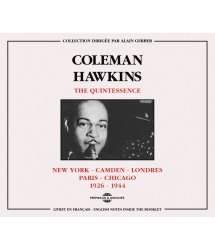
NEW YORK - CAMDEN - LONDRES - PARIS - CHICAGO 1926 -...
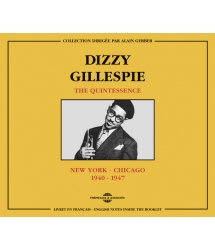
NEW YORK - CHICAGO 1940 - 1947
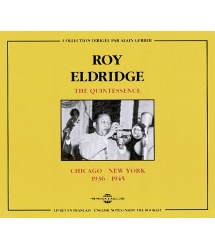
CHICAGO - NEW-YORK 1936 - 1945
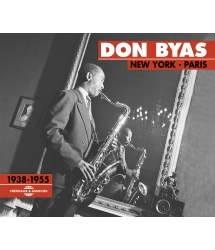
NEW YORK - PARIS 1938-1955
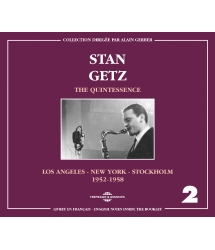
LOS ANGELES - NEW YORK - STOCKHOLM (1952-1958)
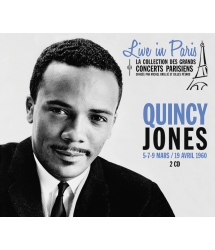
5-7-9 MARS / 19 AVRIL 1960






-
PisteTitleMain artistAutorDurationRegistered in
-
1Norman Granz IntroductionNorman GranzNorman Granz00:01:521958
-
2IdahoRoy Eldridge00:06:281958
-
3Indian SummerColeman HawkinsA. Dubin00:04:031958
-
4Autumn In New YorkLou LevyVernon Duke00:04:431958
-
5The Man I LoveLou LevyG. & I.Gershwin00:03:291958
-
6The WalkerLou Levy00:08:281958
-
7Take The A TrainRoy Eldridge00:09:001960
-
8The Nearnesse Of YouBenny Carter00:02:481960
-
9My Funny ValentineLalo SchifrinHart Lorenz00:02:431960
-
10I Remember CliffordLalo Schifrin00:03:171960
-
11LauraLalo SchifrinJohnny Mercer00:02:451960
-
12Easy LivingLalo SchifrinL. Robin00:03:121960
-
13Indiana (Back Home Again In)Lalo SchifrinL. Robin00:17:301960
-
PisteTitleMain artistAutorDurationRegistered in
-
1Norman Granz IntroductionNorman GranzNorman Granz00:01:071960
-
2NightingaleShelly Manne and His MenF. Wise00:06:261960
-
3YesterdaysShelly Manne and His MenO. Harbach00:08:071960
-
4PoincianaShelly Manne and His MenBuddy Bernier00:06:551960
-
5Step LightlyShelly Manne and His MenBenny Golson00:10:201960
-
6Vamp S BluesShelly Manne and His MenC. Mariano00:10:221960
-
7Norman Granz IntroductionNorman GranzNorman Granz00:00:391960
-
8I Remember CliffordStan Getz Quartet00:06:011960
-
9Younger Than SpringtimeStan Getz QuartetO. Hammerstein00:05:301960
-
10The Thrill Is GoneStan Getz QuartetL.Brown00:04:121960
-
11PernodStan Getz Quartet00:06:011960
-
12SummertimeStan Getz QuartetIra Gershwin00:04:501960
-
13As Catch CanStan Getz Quartet00:06:351960
-
PisteTitleMain artistAutorDurationRegistered in
-
1Norman Granz IntroductionNorman GranzNorman Granz00:01:061958
-
2Just You Just MeDizzy GillespieR. Klages00:08:491958
-
3You Re BlaseStan GetzB. Sievier00:04:281958
-
4Bernie S TuneStan GetzB. Miller00:07:371958
-
5Blue ‘N BoogieStan Getz00:11:441960
-
6Gillespiana Suite - PreludeDizzy Gillespie00:05:021960
-
7BluesDizzy Gillespie00:10:561960
-
8PanamericanaDizzy Gillespie00:06:251960
-
9AfricanaDizzy Gillespie00:06:561960
-
10ToccataDizzy Gillespie00:13:411960
JATP FA5632
JATP
JAZZ AT THE
PHILHARMONIC
1958-1960
DIZZY GILLESPIE - ROY ELDRIDGE - STAN GETZ - SONNY STITT - COLEMAN HAWKINS - SHELLY MANNE - LALO SCHIFFRIN…
Live in Paris
La collection des grands concerts parisiens
Dirigée par Michel Brillié et Gilles Pétard
JAZZ AT THE PHILHARMONIC 1958/60
Par Alain TERCINET
Au retour des beaux jours, et cela pour la sixième année consécutive, la troupe du Jazz at the Philharmonic débarqua à Paris fin avril 1958. Au grand complet avec, en têtes d’affiche. quelques habitués (Ella Fitzgerald, Oscar Peterson, Roy Eldridge), un récidiviste (Dizzy Gillespie), deux nouveaux venus (Coleman Hawkins, Stan Getz) et un invité de la dernière heure, Sonny Stitt. Venant d’arriver à Paris pour assurer un engagement au Blue Note, il avait été détourné par Norman Granz afin d’ajouter du piment à ce qui faisait la réputation de sa formule, les jam-sessions. Depuis le premier concert donné à Los Angeles le 2 juillet 1944, la raison d’être du Jazz at the Philharmonic reposait sur des confrontations, parfois détonnantes, qui draînaient un public aussi enthousiaste que tapageur.
Les desseins de Granz pouvaient être impénétrables. Pourquoi ne programma-t-il pas Sonny Stitt en compagnie de Dizzy Gillespie et de Stan Getz, ressuscitant ainsi l’ensemble de souffleurs qui avait fait de « For Musicians Only » un album de référence ? Mystère. Toujours est-il que le concert fourmilla d’excellents moments parmi lesquels figurent la version d’Hawkins d’Indian Summer, Autumn in New-York interprété par Sonny Stitt, The Man I Love dévolu à Roy Eldridge, You’re Blasé servi avec délicatesse par un Stan Getz qui, face à Dizzy, ne s’en laissa pas compter au long de Bernie’s Tune. Le lendemain 1er mai, faisant foin des traditions, une partie de la troupe travailla. Au studio Hoche, à la demande de Marcel Carné, elle enregistra une partie de la bande sonore du film « les Tricheurs ».
Lorsque le label « Jazz at the Philharmonic » figura à nouveau sur un programme en 1960, les choses avaient changé : les trois concerts présentés par Norman Granz réunissaient essentiellement des formations pré-existantes. En ce tout début d’année, les répercutions de la guerre d’Algérie n’incitait guère aux sorties nocturnes dans la capitale. Dans ses mémoires, Quincy Jones accusera ce contexte politique d’avoir été responsable de l’échec du spectacle « Free and Easy » qu’il accompagnait à l’Alhambra.
Est-ce pour cette même raison que, le 23 février, la venue de l’orchestre-phare du jazz de la côte ouest, « Shelly Manne and His Men » ne suscita aucun commentaire conséquent dans la presse spécialisée ? Il s’agissait pourtant d’une grande première mettant en vedette l’une des meilleures petites formations du moment. Des solistes constamment inspirés - Joe Gordon, Richie Kamuca, Russ Freeman, Monty Budwig – y étaient aiguillonnés par l’un des plus inventifs batteurs de l’époque, Shelly Manne. Leurs interprétations s’appuyant sur de petits arrangements discrets, efficaces, tranchaient sur la routine, nombre de formations similaires se contentant d’enchaîner solo après solo. Leur traitement de Yesterdays ou de Poinciana en sont autant d’exemples et Vamp’s Blues, quant à lui, est un petit chef-d’œuvre. Pour une fois étonnamment discipliné, le public ne s’y trompa pas.
Moins d’un mois plus tard, Norman Granz remettait le couvert. Si l’environnement avait quelque peu gagné en sérénité, il n’en fut pas de même sur la scène de l’Olympia. Les interventions du nouvel interlocuteur de Miles Davis, John Coltrane, suscitèrent des réactions à tout le moins mitigées. La retransmission du concert publiée dans le coffret « Miles Live in Paris » permet de s’en faire une idée.
Au sein du quartette de Stan Getz qui partageait l’affiche avec Miles et le trio d’Oscar Peterson, la sérénité ne régnait guère. Installé au Danemark, Stan avait engagé pour la tournée, les trois musiciens scandinaves avec lesquels il venait de graver l’album « At Large ». Sur la scène de l’Olympia, sans que cela n’entache en rien la qualité de ses solos, Getz va se trouver aux prises avec des ennuis d’anche, particulièrement dans Pernod. Une interprétation sur tempo ultra rapide qui répondait aux « objections » d’une salle indisposée par la délicatesse de The Thrill is Gone. Apparemment, les problèmes ne firent que s’aggraver. Au cours de As Catch Can, une composition de Gerry Mulligan rarement interprétée, ne jouant que parcimonieusement Getz laissa le champ libre à ses accompagnateurs. Le concert terminé, par une de ces foucades dont il était coutumier, Stan congédia sur le champ Daniel Jordan et William Schiöpffe alors qu’ils n’avaient nullement démérité et n’étaient en rien responsables de ses problèmes.
Huit mois plus tard, Getz était de retour, au sein d’une édition aussi imposante qu’hybride du Jazz at the Philharmonic. Norman Granz y présentait deux formations ayant pignon sur rue – les quintettes de Cannonball Adderley et de Dizzy Gillespie – , quelques individualités - J. J. Johnson, Stan Getz - et une troupe de légendes du jazz, admirées de tous - Benny Carter, Don Byas, Coleman Hawkins, Jo Jones. Des vétérans qui, le souvenir des années d’avant-guerre restant vivace, réussiront le miracle de réunir dans une même salle Pleyel les frères ennemis, Hugues Panassié et Charles Delaunay. Présent aussi le saxophoniste Alix Combelle, ancien partenaire d’Hawkins et de Benny Carter, tout comme l’avait été Django Reinhardt, hélas disparu, représenté pour l’occasion par son fils Babik.
Pratiquant allégrement le mélange des genres, Norman Granz n’hésita pas à associer le pianiste et le bassiste de Dizzy à Jo Jones pour constituer la rythmique des « anciens ». Tout se passa le mieux du monde ainsi qu’en témoignent Take The A Train et Indiana réunissant toute la troupe ou le Ballad Medley qui donnait tour à tour la parole à chaque souffleur. Plus logiquement à la rythmique de Cannonball Adderley sera confié le soin d’accompagner Getz et Gillespie pour un solide Blue’N’Boogie dans lequel intervenait aussi l’immense tromboniste J. J. Johnson.
Revint ensuite au quintette de Dizzy, la tâche délicate de présenter une version allégée de la Gillespiana Suite gravée en studio six jours plus tôt avec l’assistance d’un grand orchestre. Il se découvrit que, sous cette forme, la partition de Lalo Schiffrin ne perdait rien de sa puissance d’évocation. Assisté avec efficacité par Leo Wright, Gillespie, alors au sommet de son art, se montre impérial de bout en bout, de Prelude à Toccata.
Décidément, grâce à Norman Granz, 1960 aura été une année que les amateurs de jazz marquérent d’une pierre blanche et cela quelles qu’aient été leurs préférences stylistiques…
Alain Tercinet
© FRÉMEAUX & ASSOCIÉS 2016
JAZZ AT THE PHILHARMONIC 1958/60
By Alain TERCINET
At the end of April 1958, with the return of spring, the JATP troupe landed in Paris again for the sixth consecutive year. They turned out in full, with headliners who were old hands (Ella Fitzgerald, Oscar Peterson, Roy Eldridge), a second offender (Dizzy Gillespie), two newcomers (Coleman Hawkins, Stan Getz), and a last minute guest in the person of Sonny Stitt. Stitt had been booked to play at the Blue Note in Paris, and Norman Granz hijacked him to add spice to the formula that gave JATP its reputation: the jam session. Ever since the troupe’s first concert (Los Angeles, July 2, 1944), JATP’s raison d’être lay in these sometimes-explosive confrontations that drew audiences; and the enthusiasm of the latter was equal to the noise they made.
The designs of Norman Granz could sometimes work in mysterious ways. Why didn’t he put Sonny Stitt on the programme with Dizzy Gillespie and Stan Getz, thereby resuscitating the trio of horns who made the landmark album “For Musicians Only”? It’s a mystery. But it didn’t make the concert any less exhilarating, with a Hawkins version of Indian Summer, Sonny Stitt’s Autumn in New-York, The Man I Love in the hands of Roy Eldridge, and You’re Blasé delicately performed by Stan Getz (the same Getz, incidentally, who never let Dizzy intimidate him in Bernie’s Tune.) The next day was May 1, but part of the group didn’t care much for labour traditions and went to work anyway: filmmaker Marcel Carné was to send them into the Studio Hoche to record part of the soundtrack for his film “Les Tricheurs” [aka “Youthful Sinners”.]
By 1960, when the label “Jazz At The Philharmonic” once again appeared on a poster, things had changed: the three concerts that Norman Granz organized were essentially gigs by groups that already existed. It was early in the year, and repercussions of the war in Algeria were scarcely encouraging Parisians to go out at night… In his memoirs, Quincy Jones would hold the political climate responsible for the empty seats at “Free and Easy”, the show he was accompanying at the Alhambra.
Was that also why the February 23 visit by “Shelly Manne and His Men”, the Number One band out on America’s West Coast, received hardly a mention from local specialists? It was still a great première starring one of the best small groups of the period, with soloists who were constantly inspired — Joe Gordon, Richie Kamuca, Russ Freeman, Monty Budwig — spurred on by one of the day’s most inventive drummers, Shelly Manne himself. Their performances relied on discreet little arrangements that were efficient and also broke with routine (many similar groups of the time were happy just to string solos together…) The treatment Shelley and his “Men” give to Yesterdays or Poinciana are excellent examples, and Vamp’s Blues is quite simply a masterpiece. For once, the audience showed amazing discipline, and they were lucky to be there.
Less than a month later, Granz was at it again. If the atmosphere outside was now more serene, things were different inside, onstage at the Olympia, where the contributions of Miles Davis’ new partner John Coltrane had mixed reactions to say the least. The concert-broadcast published in the “Miles Live in Paris” set gives you a fair idea.
Miles and the Oscar Peterson Trio shared the bill with the Stan Getz Quartet, and serenity was lacking there, too. Stan had moved to Denmark, and for the JATP tour he’d hired the three Scandinavian musicians who’d appeared on his album “At Large”. On the Olympia’s stage — not that it detracted from the quality of his solos — Getz would have trouble with his reeds, particularly on Pernod, which he plays ultrafast in reply to the “objections” of an audience indisposed by the delicate nature of The Thrill is Gone. But his troubles worsened, apparently. During As Catch Can, a rarely played composition by Gerry Mulligan, Stan plays sparingly and gives his partners a free hand. Once the gig was over, in an outburst that wasn’t so rare for the saxophonist, Stan fired Daniel Jordan and William Schiöpffe on the spot, holding them responsible for his own problems. They in no way deserved it.
Getz resurfaced eight months afterwards, in a JATP troupe as impressive as it was hybrid. For this one, Norman Granz had convened two well-established groups (the quintets of Cannonball Adderley and Dizzy Gillespie), a couple of worthy individuals (Getz and J. J. Johnson), plus four legends in jazz whom everybody admired: Benny Carter, Don Byas, Coleman Hawkins and Jo Jones. Memories of the pre-war years were still alive and kicking, so these four veterans pulled off a miracle when they managed to draw two old rivals into Salle Pleyel at the same time: Hugues Panassié and Charles Delaunay. Also present were saxophonist Alix Combelle, an old partner of both Hawkins and Benny Carter, as had been the late Django Reinhardt, whose spirit was represented for the occasion by his son Babik.
Mixing genres cheerfully, Granz didn’t bat an eyelid in associating Jo Jones with Dizzy’s pianist and bassist to form an “old guys” rhythm section. You can hear it all turned out for the best, with Take The A Train and Indiana featuring the whole troupe, or the Ballad Medley that allows each horn to solo in turn. A more logical pairing found Cannonball Adderley’s rhythm section accompanying Getz and Gillespie for a solid Blue’N’Boogie that sees the great trombonist J. J. Johnson contributing too. Next, Dizzy’s quintet faced the delicate task of presenting a lighter version of the Gillespiana Suite recorded in a studio six days beforehand with a big band… and you discover that Lalo Schifrin’s score loses none of its evocative powers when played by this “small group.” Also worth noting is that with assistance from the efficient Leo Wright, Gillespie plays imperially throughout, from Prelude to Toccata. He was at his peak. Thanks to Norman Granz, 1960 was decidedly a red-letter year for jazz fans, no matter what style they preferred.
Alain TERCINET
Adapted into English by Martin DAVIES
© FRÉMEAUX & ASSOCIÉS 2016
JAZZ AT THE PHILHARMONIC 1958 – 1960 Live in Paris
CD 1
1. Norman Granz introduction 1’52
2. Idaho (J. Stone) 6’28
Ballad Medley
3. Indian Summer (A. Dubin, V. Herbert) 4’30
4. Autumn in New York (V. Duke) 4’43
5. The Man I Love (I. & G. Gershwin) 3’29
6. The Walker (R. Eldridge, C. Hawkins) 8’28
7. Take the A Train (B. Strayhorn) 9’00
Ballad Medley
8. The Nearnesse of You (N. Washington, H. Carmichael) 2’48
9. My Funny Valentine (L. Hart, R. Rogers) 2’43
10. I Remember Clifford (B. Golson) 3’17
11. Laura (J. Mercer, D. Raksin) 2’45
12. Easy Living (L. Robin / R. Rainger) 3’12
13. Indiana (Back Home Again in) (B. McDonald, J. F. Hanley) 17’30
2. Roy Eldridge (tp) ; Sonny Stitt (as) ; Coleman Hawkins (ts) ; Lou Levy (p) ; Herb Ellis (g) ; Max Bennett (b) ; Gus Johnson (dm) – Paris, Olympia, April 30, 1958
3. Coleman Hawkins (ts) ; Lou Levy (p) ; Herb Ellis (g) ; Max Bennett (b) ; Gus Johnson (dm) – Same place and date
4. Sonny Stitt (as) ; Lou Levy (p) ; Herb Ellis (g) ; Max Bennett (b) ; Gus Johnson (dm) – Same place and date
5. Roy Eldridge (tp) ; Lou Levy (p) ; Herb Ellis (g) ; Max Bennett (b) ; Gus Johnson (dm) – Same place and date
6. Roy Eldridge (tp) ; Sonny Stitt, Coleman Hawkins (ts) ; Lou Levy (p) ; Herb Ellis (g) ; Max Bennett (b) ; Gus Johnson (dm) – Same place and date
7 & 13. Roy Eldridge (tp) ; Benny Carter (as) ; Don Byas, Coleman Hawkins (ts) ; Lalo Schiffrin (p) ; Art Davis (b) ; Jo Jones (dm) – Paris, Salle Pleyel, November 25, 1960
8 & 11. Benny Carter (as) ; Lalo Schiffrin (p) ; Art Davis (b) ; Jo Jones (dm) – Same place and date
9 & 12. Roy Eldridge (tp) ; Lalo Schiffrin (p) ; Art Davis (b) ; Jo Jones (dm) – Same place and date
10. Don Byas (ts) ; Lalo Schiffrin (p) ; Art Davis (b) ; Jo Jones (dm) – Same place and date
CD 2
1. Norman Granz introduction 1’07
2. Nightingale (F. Wise, G. Rosner, X. Cugat) 6’26
3. Yesterdays (O. Harbach, J. Kern) 8’07
4. Poinciana (B. Bernier, N. Simon) 6’55
5. Step Lightly (B. Golson) 10’20
6. Vamp’s Blues (C. Mariano) 10’22
7. Norman Granz introduction 0’39
8. I Remember Clifford (B. Golson) 6’01
9. Younger Than Springtime (O. Hammerstein II, R. Rogers) 5’30
10. The Thrill Is Gone (L. Brown, R. Anderson) 4’12
11. Pernod (J. Mandel) 6’01
12. Summertime (DuBose Heyward,
I. Gershwin, G. Gershwin) 4’50
13. As Catch Can (G. Mulligan) 6’35
2 – 6. Shelly Manne and His Men : Joe Gordon (tp) ; Richie Kamuca (ts) ; Russ Freeman (p) ; Monty Budwig (b) ; Shelly Manne (dm, lead) – Paris, Olympia, February 23, 1960
8 – 13. Stan Getz Quartet : Stan Getz (ts) ; Jan Johansson (p) ; Daniel Jordan (b) ; William Schiöpffe (dm) – Paris, Olympia, March 21, 1960
CD 3
1. Norman Granz introduction 1’06
2. Just You, Just Me (R. Klages, J. Greer) 8’49
3. You’re Blasé (B. Sivier, O. Hamilton) 4’28
4. Bernie’s Tune (B. Miller, M. Stoller, J. Leiber) 7’37
5. Blue ‘N’ Boogie (D. Gillespie, F. Paparelli) 11’44
Gillespiana suite (Lalo Schiffrin)
6. Prelude 5’02
7. Blues 10’56
8. Panamericana 6’25
9. Africana 6’56
10. Toccata 13’41
2 & 4. Dizzy Gillespie (tp) ; Stan Getz (ts) ; Lou Levy (p) ; Ray Brown (b) ; Gus Johnson (dm) – Paris, Olympia, April 30, 1958
3. Same, omit Gillespie
5. Dizzy Gillespie (tp) ; J. J. Johnson (tb) ; Stan Getz (ts) ; Vic Feldman (p) ; Sam Jones (b) ; Louis Hayes (dm) – Paris, Salle Pleyel, November 25, 1960
6 – 10 ; Dizzy Gillespie Quintet : Dizzy Gillespie (tp) ; Leo Wright (as, fl) ; Lalo Schiffrin (p) ; Art Davis (b) ; Chuck Lampkin (dm) – Same place and date
Produced by: Daniel Filipacchi, Norman Granz & Frank Ténot.
Dedicated to Claude Boquet, Bill Dubois, Jean Claude, Philippe Moch and the gang.
La collection Live in Paris :
Collection créée par Gilles Pétard pour Body & Soul et licenciée à Frémeaux & Associés.
Direction artistique et discographie : Michel Brillié, Gilles Pétard.
Coordination : Augustin Bondoux.
Conception : Patrick Frémeaux, Claude Colombini.
Fabrication et distribution : Frémeaux & Associés.
Une aura légendaire plane au dessus de l’appellation J.A.T.P. (pour Jazz at the Philarmonic), qui regroupe une série mythique de concerts et de disques produits entre les années 1940 et 1970 par Norman Granz, le plus célèbre impresario de l’histoire du jazz. Son objectif était de sortir le jazz des clubs en le faisant entrer dans les grandes salles de spectacles en proposant des jams sessions à des artistes phares ou en vogue. Ce coffret 3 CD, avec un livret d’Alain Tercinet, regroupe pour la première fois sur CD plusieurs concerts enregistrés à Paris en 1958 et 1960. S’y confrontent l’ancienne et la nouvelle école : les piliers du swing (Roy Eldridge, Jo Jones, Coleman Hawkins,…) avec les bopeurs (Dizzy Gillespie, Lalo Schiffrin, Sonny Stitt,…) et propose également des artistes qui ne s’étaient alors jamais présentés sur le continent européen : Stan Getz ou l’orchestre de Shelly Manne. Un coffret qui témoigne de la vivacité du jazz de l’époque, qui vient compléter une collection de concerts historiques publiée chez Frémeaux & Associés, initiée notamment par les volumes consacrés à « Miles Davis » et « Ella Fitzgerald » issus des mêmes tournées.
Patrick FRÉMEAUX
A legendary aura surrounds the four initials JATP: collectively they refer to Jazz At The Philharmonic, an unforgettable series of concerts and recordings produced from the ‘40s to the ‘70s by Norman Granz, the most famous impresario in jazz history. His aim was to bring jazz out of the clubs and into major venues with jam sessions involving the day’s leading artists. This 3-disc set, complete with an introductory booklet by Alain Tercinet, contains several concerts (for the first time on CD) that were recorded in Paris in 1958 and 1960. Here, the Old School faces the New: stalwarts of Swing (Roy Eldridge, Jo Jones, Coleman Hawkins…) against Boppers (Dizzy Gillespie, Lalo Schifrin, Sonny Stitt…), and also musicians who’d never played in Europe before, like Stan Getz or Shelly Manne and his orchestra. This set shows the vivacity of jazz during this period, and completes the Frémeaux collection that began with recordings by Miles Davis and Ella Fitzgerald taken from those same JATP tours.
Patrick FRÉMEAUX
La collection « Live in Paris », dirigée par Michel Brillié, permet de retrouver des enregistrements inédits (concerts, sessions privées ou radiophoniques), des grandes vedettes du jazz, du rock & roll et de la chanson du XXe siècle. Ces prises de son live et la relation avec le public apportent un supplément d’âme et une sensibilité en contrepoint à la rigueur appliquée lors des enregistrements studio. Une importance singulière a été apportée à la restauration sonore des bandes pour convenir aux standards CD tout en conservant la couleur d’époque. Patrick FRÉMEAUX & Gilles PÉTARD
The Live in Paris collection by Michel Brillié allows listeners to hear previously-unreleased recordings (made at concerts and private- or radio-sessions) by the great 20th stars in jazz, rock & roll and song. These “live” takes, and the artists’ rapport with their audiences, gives these performances an additional soul and sensibility in counterpoint to the rigorous demands of studio recordings. Particular care was taken when restoring the sound of these tapes in order to meet CD standards while preserving the original colours of the period.
Patrick FRÉMEAUX & Gilles PÉTARD
JATP
CD 1 : 1. Norman Granz introduction 1’52 • 2. Idaho 6’28 • Ballad Medley • 3. Indian Summer 4’30 • 4. Autumn in New York 4’43 • 5. The Man I Love 3’29 • 6. The Walker 8’28 • 7. Take the A Train 9’00 • Ballad Medley • 8. The Nearnesse of You 2’48 • 9. My Funny Valentine 2’43 • 10. I Remember Clifford 3’17 • 11. Laura 2’45 • 12. Easy Living 3’12 • 13. Indiana (Back Home Again in) 17’30.
CD 2 : 1. Norman Granz introduction 1’07 • 2. Nightingale 6’26 • 3. Yesterdays 8’07 • 4. Poinciana 6’55 • 5. Step Lightly 10’20 • 6. Vamp’s Blues 10’22 • 7. Norman Granz introduction 0’39 • 8. I Remember Clifford 6’01 • 9. Younger Than Springtime 5’30 • 10. The Thrill Is Gone 4’12 • 11. Pernod 6’01 • 12. Summertime 4’50 • 13. As Catch Can 6’35.
CD 3 : 1. Norman Granz introduction 1’06 • 2. Just You, Just Me 8’49 • 3. You’re Blasé 4’28 • 4. Bernie’s Tune 7’37 • 5. Blue ‘N’ Boogie 11’44 • Gillespiana suite • 6. Prelude 5’02 • 7. Blues 10’56 • 8. Panamericana 6’25 • 9. Africana 6’56 • 10. Toccata 13’41.
Collective personnel : Roy Eldridge, Dizzy Gillespie (tp) ; J.J. Johnson (tb) ; Benny Carter, Sonny Stitt (as) ; Coleman Hawkins, Don Byas, Stan Getz (ts) ; Lou Levy, Vic Feldman (p) ; Herb Ellis (g) ; Max Bennett, Sam Jones, Ray Brown (b) ; Jo Jones, Gus Johnson, Louis Hayes (dm) ; Shelly Manne & His Men, Stan Getz Quartet, Dizzy Gillespie Quintet - April 30 1958 - February 23, March 31, November 25 1960.
